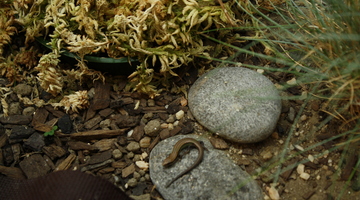Dr Kelly Hare, from the University of Otago, talks about her research into the captive management of lizards. Kelly’s aim is to find out which captive management options will produce the healthiest individuals for future translocations. Should skinks be kept on a diet or able to eat as much as they like? How much basking time is best?
Jargon alert: Translocation: when a number of individuals are transported to a new area to establish a new population or to help restore an existing population.
Transcript
DR KELLY HARE
My research is aimed at seeing which captive management options will actually provide the healthiest and strongest and fittest individuals when you translocate them into the wild later on, so those that will be more likely to survive out in the wild.
Generally reptiles, when they are kept in captivity, are often just given food as much as they want to eat, and that results in fat individuals that will grow fast but they will be a little bit more chunky, and there is evidence that the fatter individuals can’t run as fast. So what I’m trying to determine is whether those fat individuals, once they are released into the wild, are the ones that are going to be either slow and easily picked off by predators or they are going to be the ones that enough food stores that they will actually survive longer in the wild. So it’s just seeing which has the greatest survival.
I’ve got 3 different regimes running at the moment. One that is fed all the time – these individuals can eat whenever they like, and they are bigger and wider. There are some that are fed 3 times a week, which is plenty for a lizard to keep them in optimal condition – they are growing fine and they are very healthy. I’ve got a third regime which is currently out in the wild as my wild individuals so that I can actually compare this fat and thin research with what is actually happening in the wild.
By researching the different diets, I am hoping to find out what level of food availability should be provided for our more rare and endangered species that are being held in captive situations, hopefully, with the aim of providing really healthy and fit individuals for future translocations.



